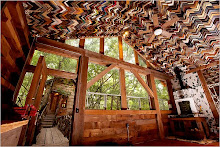
Who knew blue was difficult to make? Well thanks to a "happy accident" at Oregon University, the world now has a new blue.
Blue pigments of the past have often been expensive (ultramarine blue was made from the gemstone lapis lazuli, ground up), poisonous (cobalt blue is a possible carcinogen and Prussian blue, another well-known pigment, can leach cyanide) or apt to fade (many of the organic ones fall apart when exposed to acid or heat).
So it was a pleasant surprise to chemists at Oregon State University when they created a new, durable and brilliantly blue pigment.
What the researchers were trying to make were compounds with novel electronic properties, mixing manganese oxide, which is black, with other chemicals and heating them to high temperatures. Then Mas Subramanian (catchy name), a professor of material sciences, noticed that one of the samples that a graduate student had just taken out of the furnace was blue.
“I was shocked, actually,” Dr. Subramanian said.
In the intense heat, almost 2,000 degrees Fahrenheit, the ingredients formed a crystal structure in which the manganese ions absorbed red and green wavelengths of light and reflected only blue. When cooled, the manganese-containing oxide remained in this alternate structure. The other ingredients — white yttrium oxide and pale yellow indium oxide — are also required to stabilize the blue crystal. When one was left out, no blue color appeared.
The pigments have proven safe and durable, Dr. Subramanian said, although not cheap because of the cost of the indium. The researchers are trying to replace the indium oxide with cheaper oxides like aluminum oxide, which possesses similar properties.
The findings appear in the Journal of the American Chemical Society.
Source: The New York Times












No comments:
Post a Comment